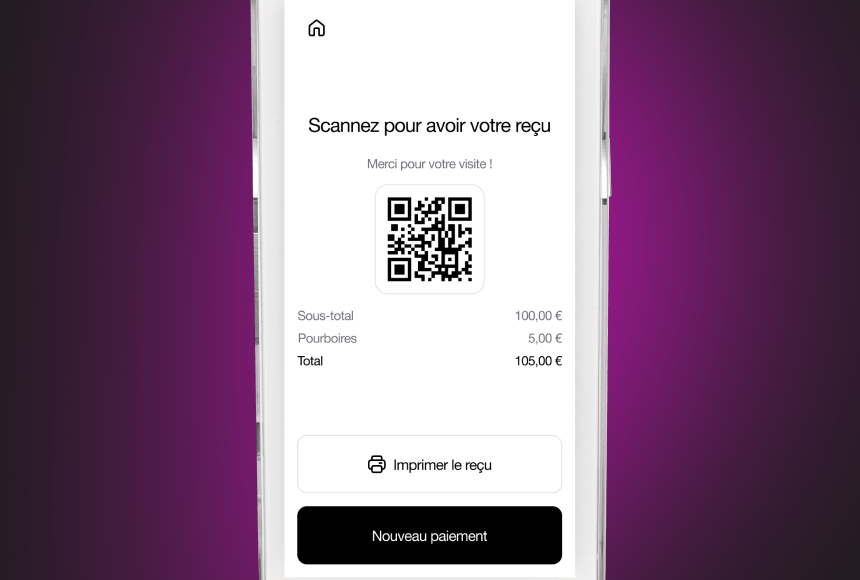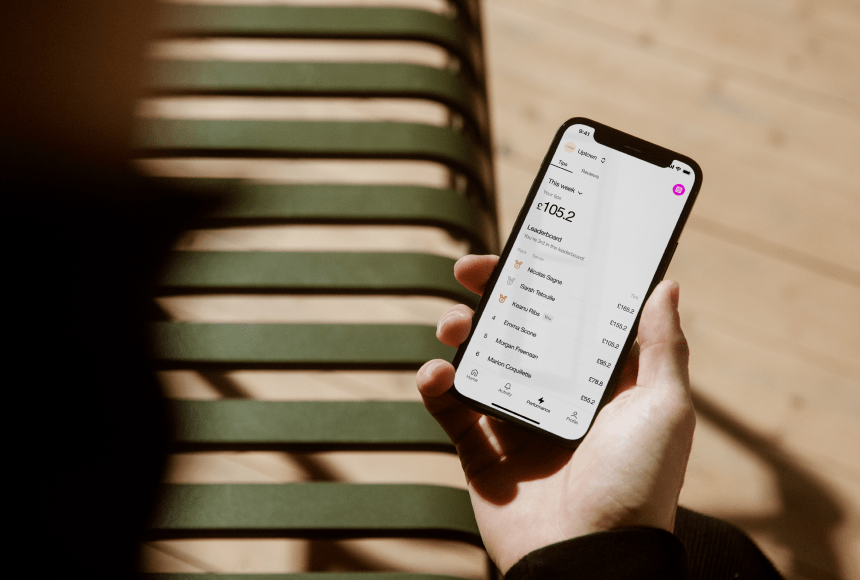
A Fresh Era for Tipping: Shifting from Pound Coins to Digital Gratitude
A Quick Glance at the Ever-Evolving UK Tipping Culture
The UK hospitality scene is constantly evolving, and tipping is no exception. Once upon a time, slipping a few pound coins onto the edge of the table was the standard way for diners to say “thank you” to their server. Today, digital technology is shaking up that tradition. From sleek payment terminals to scanning a QR code on a smartphone, the days of fumbling with loose change are long gone.
As a restaurant owner, you’ve probably noticed your clientele becoming more accustomed to quick, contactless payments. It seems like almost every guest now carries a card or a digital wallet. This shift in payment habits inevitably changes how they leave gratuities. After all, if they’re no longer handling physical banknotes, where does the tip come into play? And how does this affect the way your teams receive their well-earned reward?
Why the UK Is Leaning Toward Contactless—and Why Tips Follow Suit
It’s not just a trend—it’s a broader cultural change. In 2022 alone, over 60% of in-person transactions in the UK were completed using contactless methods (according to UK Hospitality), a figure that continues to climb. The COVID-19 pandemic accelerated the transition away from handling physical cash, encouraging guests to pay with the quickest, safest means possible. And to many, “quick and safe” now means contactless.
But how does this influence tipping? Here’s a closer look:
- Convenience: When it’s easy for guests to pay, it’s easier for them to show appreciation through a tip. If the payment flow is seamless, there’s a higher likelihood they’ll add a gratuity.
- Transparency: With digital tipping, there’s often a clear display of where the money goes. Many restaurants highlight that tips go directly to servers and staff, boosting trust and encouraging larger tips.
- Security: Contactless payments reduce the risk that staff might lose cash tips in transit. They also reduce concerns about theft or miscalculations at the end of the day.
- Speed: Contactless tips are processed instantly. Your staff no longer has to wait for the end of the week to see their extra earnings; many payment solutions distribute tips rapidly.
In short, when guests pay digitally, the tipping experience becomes quicker, clearer, and more secure. That’s good news not just for your bank deposits, but also for team morale—when people see timely rewards, they stay motivated to offer top-notch service.
The Changing Legal Landscape: Ensuring Fairness for Your Staff
Another reason tipping is making headlines in the UK is the push for new legislation to protect employees’ tips. The UK government has introduced a bill aimed at ensuring staff can keep 100% of their hard-earned gratuities (according to Gov.uk). Many restaurants across Britain already practice fair tipping policies, but the forthcoming legislation is a reminder that the industry should do more to reassure guests and employees alike.
But let’s step back for a moment and think about what all this means for you, the restaurant owner:
- Transparency is key: Guests want to feel confident that any tip they add via digital payment actually ends up in your team’s pockets.
- Policy matters: By clearly outlining how tips are split in your employee handbook and on pay slips, you avoid misunderstandings and build staff trust.
- Customer perception: Today’s diners are more conscious about ethical practices. Showing that you abide by fair tipping rules can be a powerful marketing advantage.
Offering contactless tipping alongside a transparent policy can reflect positively on your brand. In an industry where margins are often razor-thin, earning customer loyalty and staff loyalty in one go is a serious win.
From the Kitchen to the Table: Tracing the Journey of a Modern Tip
Imagine a bustling London brasserie on a Friday night. Diners settle in, choose their wine, and soak up the atmosphere. When the server drops off the bill, they also hand over a payment terminal or direct the guest to scan a QR code on a digital menu. The guest sees the total, selects a tip percentage or taps a custom amount, and completes the transaction with a tap of their card or phone. Then they leave, table satisfied, staff appreciative, front-of-house and back-of-house content.
What Happens Next?
While the guest heads out, that tip logs into your system. Depending on the tools you use, it’s either directly transferred to a separate staff account or maintained in a dedicated digital tip jar. End-of-day or weekly reconciliation might be handled automatically. At many restaurants, staff can track their own share at the tap of a button. Thanks to this instant clarity, employees have a boosted sense of control and ownership over their day-to-day contributions.
When the Maple & Oak Bistro in central London switched to a QR-based payment solution, management noticed their average tips climbed by almost 15%. Their secret? A frictionless payment process that gently prompts guests to add a tip, showing pre-selected percentages (e.g., 10%, 12.5%, 15%) alongside a “custom” option. Some might call that a small tweak, but it has significantly impacted staff satisfaction and retention.
The Benefits of Going Contactless for Both Guests and Staff
Let’s explore the core advantages from the perspectives of both parties—your customers and your employees.
1. Guests Enjoy Speed and Simplicity
- Easy Payments: No fumbling for the right mix of notes and coins. Guests can simply tap their card or phone and head on their way.
- Reduced Wait Times: Servers no longer have to wait for the terminal to become available or for guests to hunt for their wallets.
- Seamless Tipping: A straightforward digital prompt makes it more likely that diners will choose to leave something extra for excellent service.
2. Staff Appreciate Visibility and Faster Payouts
- Immediate Feedback: Servers can quickly see how their performance translates into additional income, driving motivation.
- Accurate Tracking: Digital systems minimise the possibility of human error when tallying up tips at the end of the day.
- Improved Fairness: Automated tip distributions can split tips per shift or per hour worked, reducing the risk of internal disputes.
Overcome Common Reservations About Contactless Gratuities
Despite the mounting enthusiasm for digital tipping, you might still have a few concerns. Let’s arm you with information to address them.
“But I Don’t Want to Lose the Personal Touch…”
This is a common worry. Does a contactless environment eliminate the friendly exchange between diner and server? Actually, it can make those personal connections shine even more. When the entire payment flow is streamlined, your team has more time to chat with guests and focus on providing memorable service. They spend less time processing payments and more energy ensuring the customer leaves with a smile.
“Aren’t Payment Terminals Expensive?”
Every restaurant needs to weigh costs against benefits. While investing in modern card machines or QR-based payment solutions may introduce fees, the overall impact on customer experience, tip revenue, and staff morale often justifies the extra line item. Some restaurants report increased total revenue simply by speeding up table turnover and boosting tip frequency.
“Will My Older Customers Adapt?”
It’s true that contactless usage might be more intuitive for younger generations. However, the overall adoption of digital payments is surging even among seniors, especially post-pandemic. Ensuring a user-friendly signage or brief instructions on the menu can go a long way. As people find tapping and scanning simpler than rummaging through a wallet for coins, they may actually embrace this convenience more than you expect.
How to Prepare Your Team for a Digital Shift in Tipping
A switch from table-side cash tips to contactless tipping might feel like a cultural adjustment for your staff. Even if you’ve already introduced card payments, emphasising contactless tipping can prompt questions. Here’s how to prepare:
- Communication: Start with a clear announcement outlining what changes are happening and why. Be transparent about what the forecasted benefits are—both for their wages and the overall guest experience.
- Training: Schedule short sessions to demonstrate how the new system works. Servers should know how to prompt a tip in the payment flow without sounding pushy.
- Gentle Encouragement: Remind your team that a simple question—“Would you like to add a tip?”—can go a long way. Customers might not realise an option exists if no one mentions it.
- Policies in Writing: Provide an employee handbook addendum or a quick reference sheet explaining how tips are calculated and distributed. This reduces confusion and fosters trust.
- Monitor Feedback: Ask servers how guests respond to the new system. Are there queries or technical hiccups? Use this feedback to refine your approach.
A Practical Look: Balancing Costs and Gains
You may wonder if implementing contactless tipping is worth the additional setup or transaction fees. One way to determine this is to crunch the numbers. Let’s break down a simplified example in a small table:
| Factors | With Cash Tips | With Contactless Tipping |
|---|---|---|
| Average Spend | £30 | £30 |
| Tip Percentage | ~8% (variable) | ~12% (more consistent) |
| Transaction Fees | None | ~2% on card payments |
| Staff Motivation | Moderate (less clarity) | Higher (immediate visibility) |
If you notice a 4% boost in tip percentage by going contactless (from 8% on average to 12%), this often outweighs the 2% transaction fee you might pay to your payment provider. Moreover, your servers gain immediate access to digital tip records. This clarity can improve morale and reduce staff turnover, which is especially important in an industry where hiring and training can be a significant expense.
Integrating a QR Code System for Contactless Payment and Tipping
QR code systems are straightforward for guests. They open their camera, hover over the code, and automatically land on a secure payment page where they can settle the bill and add a gratuity. Companies like sunday are at the forefront of this convenience, offering a frictionless experience that merges the worlds of digital menus, bills, and tips. If you’re curious, scanning a single code can immediately display the total along with tip options—like 10%, 12.5%, or 15%—plus a custom field. Once the tip is chosen, the transaction is done in seconds.
With an eye toward your restaurant’s branding, you can often customise these digital payment pages. That means you can include a message like “Thank you for dining with us. Your tip directly supports our dedicated team!” This subtle reminder reassures guests their gratitude is well-placed.
The Impact on Reviews: From Gratuities to Google Stars
Remember, the payment moment is typically the last point of contact your restaurant has with a customer. A smooth and fair tip experience can leave a positive final impression. And a positive final impression might lead to positive reviews. People are more likely to fire up Google and leave a glowing comment if they perceive your restaurant as modern, quick to respond to their needs, and clear about tip distribution.
It works the other way, too: a cumbersome payment process or a tip prompt that’s difficult to navigate can sour the end of an otherwise lovely meal. The last thing you want is for guests to feel rushed, confused, or strong-armed into tipping. That’s why user-friendly digital solutions matter. Some platforms even integrate a direct link to your Google profile, so customers can post their impressions immediately after paying—boosting your online visibility.
Success Story: The Maple & Oak Bistro
Here’s a more detailed look at how one fictional restaurant, The Maple & Oak Bistro, saw benefits across the board when they switched to contactless tipping:
- Higher Tips: As mentioned, tip amounts jumped by roughly 15% because guests found the process simple and were subtly guided to include a tip.
- Faster Turnover: Settling bills went from an average of five minutes to under two minutes. Across busy weekends, that’s a game-changer.
- Employee Satisfaction: Staff reported feeling more valued, as they noticed tips arrive more predictably, with fewer disputes about splitting envelopes of cash at the end of the night.
- Positive Online Reviews: The bistro saw a noticeable uptick in positive Google reviews, with customers specifically mentioning how “easy and modern” the payment experience felt.
For The Maple & Oak, contactless tipping wasn’t just a tech upgrade—it became the underlying thread that boosted staff morale, trimmed operational inefficiencies, and enhanced the guest experience. While your journey might differ, you can probably relate to the day-to-day challenges they faced.
Fine-Tuning Your Approach: Practical Tips for Restaurant Owners
Shifting your tipping model is more than a technology upgrade—it’s also a cultural change that requires a bit of finesse. Whether you’re a small independent café or a larger chain, you can prime your business to make contactless tipping a true asset.
1. Give Guests a Gentle Nudge
When a guest taps their card or phone, offer pre-set tip suggestions. Around 10%, 12.5%, and 15% are common in the UK. Make sure there’s a clear “No Tip” or “Other Amount” button so they never feel forced.
2. Lead with Transparency
Say it upfront: “All our tips go straight to our staff.” Place a short notice on menus or near the payment terminal. When guests see that your approach is fair, they’re more inclined to be generous.
3. Keep the Dialogue Open
Customers might be unsure how digital tipping works. Have your servers prepared to answer any question with warmth and clarity. If someone asks, “Will the chef get any of this tip?” staff should be able to answer confidently.
4. Remain Flexible
Though contactless is skyrocketing, some diners will still want to pay cash. Maintain a system that accommodates everybody. Flexibility shows you value each customer’s comfort zone.
5. Monitor Your Data
Once your new system is in place, keep tracking whether your average tip percentages or staff satisfaction rates are rising. Studying these metrics helps you detect any areas that need a tweak—like retraining staff or adjusting the tip prompt to match typical local tipping customs.
Looking Ahead: The Future of Digital Tipping in the UK
With contactless quickly becoming the UK’s go-to payment method, we can only expect digital gratuities to grow in tandem. And it’s not just full-service restaurants. From coffee shops to fast-casual eateries, operators of all sizes are tapping into the convenience of frictionless, modern tipping systems. This expanding ecosystem brings new ideas about staff compensation, customer engagement, and business sustainability.
As the industry continues to evolve, having an adaptable mindset and the right tech partnerships becomes ever more critical. This is where solutions like sunday can make a difference, providing an end-to-end platform that connects order, payment, and tipping into one seamless experience. Of course, your needs may vary—so choose the model and tools that align with your brand identity and operational flow.
The Final Course: A Feast of Opportunities
From streamlined bill payment to robust staff loyalty, digital tipping in the UK hospitality sector isn’t just about convenience—it’s a reimagining of the entire dining experience. By weaving transparency, fairness, and modern technology into an approach that respects age-old hospitality traditions, you can create a win-win for everyone.
Embrace the changes with open arms, involve your staff every step of the way, and pay attention to customer feedback. Think of it like perfecting a signature dish in your restaurant—experiment, refine, and keep adapting. If the final outcome leaves your guests delighted and your team rewarded, you’ll have found your secret sauce.
Frequently Asked Questions (FAQ)
Is contactless tipping common in all parts of the UK?
It’s gaining traction nationwide—particularly in major cities where contactless payments are most prevalent. Rural or smaller towns might have a slower adoption rate, but overall, the UK is steadily embracing digital transactions.
Does digital tipping include a service charge?
That depends on how a restaurant structures its pricing. Some establishments charge a service fee automatically. Others rely solely on voluntary tips. Clarify your policy and communicate it to customers so there are no surprises.
How do restaurants typically distribute tips collected digitally?
Each restaurant has its own system. Some distribute tips based on hours worked, and others might split equally among the team. The key is to have a clear, transparent policy that everyone understands.
Could contactless tipping alienate customers who prefer using cash?
It’s unlikely. While contactless grows in popularity, many places still accept cash tips. Consider providing both options so no guest feels excluded.
How can I ensure my staff trusts the digital tipping process?
Regular communication is essential. Explain how the tips are tracked, collected, and distributed. If possible, offer a staff portal or a straightforward method to see tip earnings in real time, building confidence in the system.


